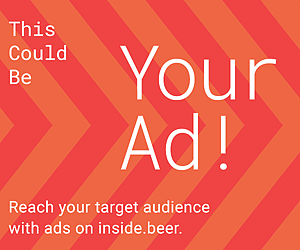After spending more than a year on the shelf because of the global pandemic, big events are back in the U.S. And marketers like Molson Coors are investing big behind efforts to ensure that when Americans came out of their forced hibernations they had plenty of cold beverages in their hands.
“We have been – and remain – fully engaged bringing our brands back to life to consumers across all touchpoints,” says Bill Averill, vice president of field marketing for Molson Coors. “Live events and festivals are the lifeblood of local marketing, and when restrictions lifted across the country we moved quickly to get back, fully activating in a safe and responsible manner with consumer experiences. And it’s really picked up this summer.”
It’s a story of pent-up demand. Once vaccines became widely available in the United States this year, a crush of people rushed back into stadiums and arenas to cheer on their teams. They set attendance records at outdoor concerts and festivals this summer. And they snapped up tickets to county fairs, rodeos and other events big and small -- anything that would get them out of their homes.
Events and in-person experiences began to turn back on in earnest in April and May, data show. According to a report in Event Marketer, 68% of experiences in May were held in-person, up from just 4% in May 2020. That marked the first time in more than a year that in-person event and experience attendance outpaced virtual events.
The trend has sharply accelerated into the warmer months, according to a report from PredictIQ. And while numbers have not fully recovered to 2019 levels, events with 300 or more attendees continue to rise across the country, with more than 38,000 events scheduled within the next 90 days, compared with about 27,000 over the previous 90 days, according to the report.
Large live events are fertile ground for marketers, offering a chance to brand build and sample innovations with a captive audience. And as the size of that pie grows, Molson Coors is getting more aggressive in its efforts to snag a bigger piece of it. Through a mixture of branded experiences, alliances, partnerships and sponsorships, the company invested behind ensuring its brands played a leading role for drinkers as they returned to celebrate.
“Our goal is for our brands to deliver one-of-a-kind, dynamic consumer experiences,” Averill says. “This helps us create lifelong connections with consumers and leads to driving brand love so that when consumers reach for a beverage, they reach for one of ours.”
A second, equally important aim, is to boost awareness and consumer trial of the company’s innovation portfolio, specifically its line of hard seltzers and above-premium beers, he says.
With Major League Baseball, Molson Coors leveraged its 14 alliances with MLB teams this summer to deliver more than 40,000 samples of its innovation brands, including Vizzy, Topo Chico Hard Seltzer, Hop Valley and Blue Moon LightSky.
The company also introduced new augmented reality technology with its baseball partnerships, allowing drinkers to scan QR codes on aluminum pints for a chance to win tickets and other experiences. That technology will continue to play a key role heading into football season, which Averill calls “a must-win opportunity for us across all classes of trade that allows us to connect with consumers, retailers and distributors with America’s No. 1 passion.”
And even with uncertainty surrounding the more-transmissible Delta variant, “the steady return of events is likely to continue,” according to Predict IQ, which cited the return of fans to pro and college football stadiums.
Miller Lite has expanded its pro football alliances to 18 teams, and this fall it is launching a handful of new branded destinations inside NFL stadiums. The brand also has redesigned packaging in alliance markets to stand out on shelf at retail and “provide compelling retail theater,” Averill says.
Coors Light, meanwhile, continues to expand its college football program, extending its relationship with ESPN personality Kirk Herbstreit, creating a branded augmented reality tailgate experience to engage fans and establishing national retail programming throughout the college football season.
Not only do these partnerships boost share, volume and long-term connections with fans inside stadiums, “they galvanize our entire system to drive enhanced retail execution,” Averill says. That means gaining more features, promotions and larger displays in nearby on- and off-premise accounts.
“Our brands are coming to life in new and innovative ways – ways that we did not have available to us in 2020,” Averill says. “The pandemic really challenged us to rethink how best to engage with consumers, and we’ve risen to the challenge with new, dynamic programs to reach fans across the country.”
Altogether, Averill says, Molson Coors is “moving back to full activity” with its local marketing efforts and “it’s only going to get bigger and better in 2022.”

